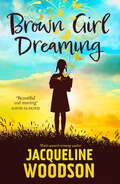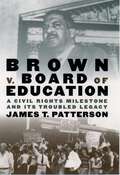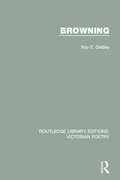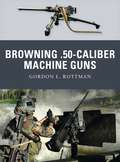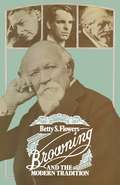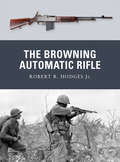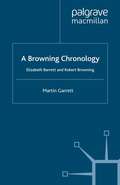- Table View
- List View
Brown at 10
by Anthony SeldonGORDON BROWN's three years in power were among the most turbulent in Downing Street's post-war history. Brown at 10 tells the compelling story of his hubris and downfall, and with it, the final demise of the New Labour project. Containing an extraordinary breadth of previously unpublished material, Brown at 10 is a frank, penetrating portrait of a remarkable era, written by one of Britain's leading political and social commentators. Using unrivalled access to many of those at the centre of Brown's government, and original material gleaned from hundreds of hours of interviews with many of its leading lights, Brown at 10 looks with greater depth and detail into the signal events and circumstances of Brown's premiership than any other account published since the May 2010 general election. It also relates, for the first time, the full extraordinary tale of the pivotal role played by Brown in persuading the world's leaders to address the global banking crisis head-on. The result is the definitive chronicle of Gordon Brown's troubled period in Number 10, from the unique perspective of those who worked most closely with him.
Brown Girl Dreaming
by Jacqueline WoodsonA mesmerising story about a young girl growing up in America, finding a home and discovering her voice - a multi-award winning New York Times bestseller and President Obama's 'O' Book Club pick.Brown Girl Dreaming is the unforgettable story of Jacqueline Woodson's childhood, sharing what it was like to grow up as an African-American in the wake of the Civil Rights movement, and discovering the first sparks of an incredible, lifelong gift for writing. It's packed with wonderful reflections on family and on place, in a way that will appeal to readers from 11 to adult.Emotionally charged and touching, each line tells the tale of one girl's search to find her voice, her identity and her place in the world.This book has been a bestseller in the US for almost a decade, winning every accolade and prize including the prestigious Newbery Honor Award, and is now made available to readers in the UK for the first time.
Brown-, Green- and Blue-Water Fleets: The Influence of Geography on Naval Warfare, 1861 to the Present (Non-ser.)
by Michael Lindberg Daniel ToddFrom riverine operations in the American Civil War and China in the 1860s to the major fleet engagements of the World Wars, plus more recent naval actions in the Falklands/Malvenas War and Gulf War, Lindberg and Todd methodically show how geography has shaped the strategy, tactics, and tools of naval warfare. Alfred T. Mahan was perhaps the first naval professional to recognize and acknowledge fully the influence of geography on navies and naval warfare. Many of his principles of seapower were inherently geographical and influenced both what kind of naval force a state would possess and how it would be utilized. In the time that has passed since Mahan made his observations, naval warfare and navies have experienced major technological changes, yet geographical factors continue to exert their influence on how navies fight, how they are structured, and the design of the ships that they deploy.After providing a comprehensive review of geostrategic theory and its application to naval warfare, the book is organized by major operational environments in which such warfare occurs--the high seas, littoral regions, and inland waterways. Lindberg and Todd illustrate how such geographical factors as distance, location, surface, and subsurface conditions influence naval operations, including fleet-to-fleet engagements, amphibious assault, coastal defense, logistical support, and riverine actions. A separate chapter takes an in-depth look at the ways in which geography influences navies themselves with issues such as primary mission type, force structure development, and ship design. Through the use of historical case studies, this volume applies long held geographical concepts to fundamental naval theories and practices to illustrate just how pervasive geography's influence has been during the past 140 years.
Brown in the Windy City: Mexicans and Puerto Ricans in Postwar Chicago (Historical Studies of Urban America)
by Lilia FernándezBrown in the Windy City is the first history to examine the migration and settlement of Mexicans and Puerto Ricans in postwar Chicago. Lilia Fernández reveals how the two populations arrived in Chicago in the midst of tremendous social and economic change and, in spite of declining industrial employment and massive urban renewal projects, managed to carve out a geographic and racial place in one of America’s great cities. Through their experiences in the city’s central neighborhoods over the course of these three decades, Fernández demonstrates how Mexicans and Puerto Ricans collectively articulated a distinct racial position in Chicago, one that was flexible and fluid, neither black nor white.
Brown in the Windy City: Mexicans and Puerto Ricans in Postwar Chicago (Historical Studies of Urban America)
by Lilia FernándezBrown in the Windy City is the first history to examine the migration and settlement of Mexicans and Puerto Ricans in postwar Chicago. Lilia Fernández reveals how the two populations arrived in Chicago in the midst of tremendous social and economic change and, in spite of declining industrial employment and massive urban renewal projects, managed to carve out a geographic and racial place in one of America’s great cities. Through their experiences in the city’s central neighborhoods over the course of these three decades, Fernández demonstrates how Mexicans and Puerto Ricans collectively articulated a distinct racial position in Chicago, one that was flexible and fluid, neither black nor white.
Brown in the Windy City: Mexicans and Puerto Ricans in Postwar Chicago (Historical Studies of Urban America)
by Lilia FernándezBrown in the Windy City is the first history to examine the migration and settlement of Mexicans and Puerto Ricans in postwar Chicago. Lilia Fernández reveals how the two populations arrived in Chicago in the midst of tremendous social and economic change and, in spite of declining industrial employment and massive urban renewal projects, managed to carve out a geographic and racial place in one of America’s great cities. Through their experiences in the city’s central neighborhoods over the course of these three decades, Fernández demonstrates how Mexicans and Puerto Ricans collectively articulated a distinct racial position in Chicago, one that was flexible and fluid, neither black nor white.
Brown in the Windy City: Mexicans and Puerto Ricans in Postwar Chicago (Historical Studies of Urban America)
by Lilia FernándezBrown in the Windy City is the first history to examine the migration and settlement of Mexicans and Puerto Ricans in postwar Chicago. Lilia Fernández reveals how the two populations arrived in Chicago in the midst of tremendous social and economic change and, in spite of declining industrial employment and massive urban renewal projects, managed to carve out a geographic and racial place in one of America’s great cities. Through their experiences in the city’s central neighborhoods over the course of these three decades, Fernández demonstrates how Mexicans and Puerto Ricans collectively articulated a distinct racial position in Chicago, one that was flexible and fluid, neither black nor white.
Brown in the Windy City: Mexicans and Puerto Ricans in Postwar Chicago (Historical Studies of Urban America)
by Lilia FernándezBrown in the Windy City is the first history to examine the migration and settlement of Mexicans and Puerto Ricans in postwar Chicago. Lilia Fernández reveals how the two populations arrived in Chicago in the midst of tremendous social and economic change and, in spite of declining industrial employment and massive urban renewal projects, managed to carve out a geographic and racial place in one of America’s great cities. Through their experiences in the city’s central neighborhoods over the course of these three decades, Fernández demonstrates how Mexicans and Puerto Ricans collectively articulated a distinct racial position in Chicago, one that was flexible and fluid, neither black nor white.
Brown in the Windy City: Mexicans and Puerto Ricans in Postwar Chicago (Historical Studies of Urban America)
by Lilia FernándezBrown in the Windy City is the first history to examine the migration and settlement of Mexicans and Puerto Ricans in postwar Chicago. Lilia Fernández reveals how the two populations arrived in Chicago in the midst of tremendous social and economic change and, in spite of declining industrial employment and massive urban renewal projects, managed to carve out a geographic and racial place in one of America’s great cities. Through their experiences in the city’s central neighborhoods over the course of these three decades, Fernández demonstrates how Mexicans and Puerto Ricans collectively articulated a distinct racial position in Chicago, one that was flexible and fluid, neither black nor white.
Brown Lord of the Mountain
by Walter MackenLike his father before him, Donn is born to the now mythical role of the Lord of the Mountain, a remote community in rural Ireland, unmarked by the passage of time. But Donn longs for a wider kingdom. He deserts his bride, roams the world, fights in wars, is footloose - yet finds that he is homesick.Sixteen years later he returns to take up the threads of his old life, to learn to love his afflicted daughter, and to bring progress to the neglected green valley. Light comes, water flows, the land prospers. Then, on a night of innocent festivity, a monstrous crime is perpetrated.His kingdom violated, Donn dedicates himself to a terrible revenge that can only destroy the avenger as well as the hunted
Brown Skins, White Coats: Race Science in India, 1920–66
by Projit Bihari MukharjiA unique narrative structure brings the history of race science in mid-twentieth-century India to vivid life. There has been a recent explosion in studies of race science in the twentieth and twenty-first centuries, but most have focused either on Europe or on North America and Australia. In this stirring history, Projit Bihari Mukharji illustrates how India appropriated and repurposed race science to its own ends and argues that these appropriations need to be understood within the national and regional contexts of postcolonial nation-making—not merely as footnotes to a Western history of “normal science.” The book comprises seven factual chapters operating at distinct levels—conceptual, practical, and cosmological—and eight fictive interchapters, a series of epistolary exchanges between the Bengali author Hemendrakumar Ray (1888–1963) and the protagonist of his dystopian science fiction novel about race, race science, racial improvement, and dehumanization. In this way, Mukharji fills out the historical moment in which the factual narrative unfolded, vividly revealing its moral, affective, political, and intellectual fissures.
Brown Skins, White Coats: Race Science in India, 1920–66
by Projit Bihari MukharjiA unique narrative structure brings the history of race science in mid-twentieth-century India to vivid life. There has been a recent explosion in studies of race science in the twentieth and twenty-first centuries, but most have focused either on Europe or on North America and Australia. In this stirring history, Projit Bihari Mukharji illustrates how India appropriated and repurposed race science to its own ends and argues that these appropriations need to be understood within the national and regional contexts of postcolonial nation-making—not merely as footnotes to a Western history of “normal science.” The book comprises seven factual chapters operating at distinct levels—conceptual, practical, and cosmological—and eight fictive interchapters, a series of epistolary exchanges between the Bengali author Hemendrakumar Ray (1888–1963) and the protagonist of his dystopian science fiction novel about race, race science, racial improvement, and dehumanization. In this way, Mukharji fills out the historical moment in which the factual narrative unfolded, vividly revealing its moral, affective, political, and intellectual fissures.
Brown v. Board of Education: A Civil Rights Milestone and Its Troubled Legacy (Pivotal Moments in American History)
by James T. Patterson2004 marks the fiftieth anniversary of the Supreme Court's unanimous decision to end segregation in public schools. Many people were elated when Supreme Court Chief Justice Earl Warren delivered Brown v. Board of Education of Topeka in May 1954, the ruling that struck down state-sponsored racial segregation in America's public schools. Thurgood Marshall, chief attorney for the black families that launched the litigation, exclaimed later, "I was so happy, I was numb." The novelist Ralph Ellison wrote, "another battle of the Civil War has been won. The rest is up to us and I'm very glad. What a wonderful world of possibilities are unfolded for the children!" Here, in a concise, moving narrative, Bancroft Prize-winning historian James T. Patterson takes readers through the dramatic case and its fifty-year aftermath. A wide range of characters animates the story, from the little-known African Americans who dared to challenge Jim Crow with lawsuits (at great personal cost); to Thurgood Marshall, who later became a Justice himself; to Earl Warren, who shepherded a fractured Court to a unanimous decision. Others include segregationist politicians like Governor Orval Faubus of Arkansas; Presidents Eisenhower, Johnson, and Nixon; and controversial Supreme Court justices such as William Rehnquist and Clarence Thomas. Most Americans still see Brown as a triumph--but was it? Patterson shrewdly explores the provocative questions that still swirl around the case. Could the Court--or President Eisenhower--have done more to ensure compliance with Brown? Did the decision touch off the modern civil rights movement? How useful are court-ordered busing and affirmative action against racial segregation? To what extent has racial mixing affected the academic achievement of black children? Where indeed do we go from here to realize the expectations of Marshall, Ellison, and others in 1954?
Brown v. Board of Education: A Civil Rights Milestone and Its Troubled Legacy (Pivotal Moments in American History)
by James T. Patterson2004 marks the fiftieth anniversary of the Supreme Court's unanimous decision to end segregation in public schools. Many people were elated when Supreme Court Chief Justice Earl Warren delivered Brown v. Board of Education of Topeka in May 1954, the ruling that struck down state-sponsored racial segregation in America's public schools. Thurgood Marshall, chief attorney for the black families that launched the litigation, exclaimed later, "I was so happy, I was numb." The novelist Ralph Ellison wrote, "another battle of the Civil War has been won. The rest is up to us and I'm very glad. What a wonderful world of possibilities are unfolded for the children!" Here, in a concise, moving narrative, Bancroft Prize-winning historian James T. Patterson takes readers through the dramatic case and its fifty-year aftermath. A wide range of characters animates the story, from the little-known African Americans who dared to challenge Jim Crow with lawsuits (at great personal cost); to Thurgood Marshall, who later became a Justice himself; to Earl Warren, who shepherded a fractured Court to a unanimous decision. Others include segregationist politicians like Governor Orval Faubus of Arkansas; Presidents Eisenhower, Johnson, and Nixon; and controversial Supreme Court justices such as William Rehnquist and Clarence Thomas. Most Americans still see Brown as a triumph--but was it? Patterson shrewdly explores the provocative questions that still swirl around the case. Could the Court--or President Eisenhower--have done more to ensure compliance with Brown? Did the decision touch off the modern civil rights movement? How useful are court-ordered busing and affirmative action against racial segregation? To what extent has racial mixing affected the academic achievement of black children? Where indeed do we go from here to realize the expectations of Marshall, Ellison, and others in 1954?
Browned Off and Bloody-Minded: The British Soldier Goes to War 1939-1945
by Alan AllportMore than three-and-a-half million men served in the British Army during the Second World War, the vast majority of them civilians who had never expected to become soldiers and had little idea what military life, with all its strange rituals, discomforts, and dangers, was going to be like. Alan Allport’s rich and luminous social history examines the experience of the greatest and most terrible war in history from the perspective of these ordinary, extraordinary men, who were plucked from their peacetime families and workplaces and sent to fight for King and Country. Allport chronicles the huge diversity of their wartime trajectories, tracing how soldiers responded to and were shaped by their years with the British Army, and how that army, however reluctantly, had to accommodate itself to them. Touching on issues of class, sex, crime, trauma, and national identity, through a colorful multitude of fresh individual perspectives, the book provides an enlightening, deeply moving perspective on how a generation of very modern-minded young men responded to the challenges of a brutal and disorienting conflict.
Browning (Routledge Library Editions: Victorian Poetry)
by Roy E. GridleyFirst published in 1972. Browning was a keen observer and dramatic recorder of nineteenth-century European culture; his poetry reflects a wide range of intellectual, religious and artistic issues of his day. Roy E. Gridley shows here that during the six decades of Browning’s active writing career (1832-89), his poetry is a record and an interpretation of the changing modes of thought, feeling and expression of nineteenth-century life. Browning was a ‘romantic’ who, by virtue of his realistic and often revolutionary poetry, became a ‘modern’, and had considerable influence on writers such as Yeats, Eliot and Pound. While surveying the whole of Browning’s life and work, Gridley focuses closely on the more famous poems, examining them as documents that give the general reader a deeper appreciation of the richness and diversity of life in Victorian Europe.
Browning (Routledge Library Editions: Victorian Poetry)
by Roy E. GridleyFirst published in 1972. Browning was a keen observer and dramatic recorder of nineteenth-century European culture; his poetry reflects a wide range of intellectual, religious and artistic issues of his day. Roy E. Gridley shows here that during the six decades of Browning’s active writing career (1832-89), his poetry is a record and an interpretation of the changing modes of thought, feeling and expression of nineteenth-century life. Browning was a ‘romantic’ who, by virtue of his realistic and often revolutionary poetry, became a ‘modern’, and had considerable influence on writers such as Yeats, Eliot and Pound. While surveying the whole of Browning’s life and work, Gridley focuses closely on the more famous poems, examining them as documents that give the general reader a deeper appreciation of the richness and diversity of life in Victorian Europe.
Browning .30-caliber Machine Guns (Weapon)
by Gordon L. Rottman Johnny Shumate Alan GillilandFirst adopted in 1917, the rugged and reliable Browning .30-caliber machine gun remained in US service into the Vietnam era, and is still occasionally found in use elsewhere even today. Produced in both water-cooled and air-cooled versions, it has been employed in every imaginable role for a machine gun – antipersonnel, antiaircraft, mounted on aircraft as both defensive and offensive armament, defensive armament aboard vehicles (armored and soft-skin), mounted on watercraft, and others. Employing gripping first-hand testimony and featuring specially commissioned illustrations and detailed photographs, many in color, this lively study of the Browning .30-caliber machine gun reveals the origins, combat history and legacy of this versatile and dependable weapon.
Browning .30-caliber Machine Guns (Weapon #32)
by Gordon L. Rottman Johnny Shumate Alan GillilandFirst adopted in 1917, the rugged and reliable Browning .30-caliber machine gun remained in US service into the Vietnam era, and is still occasionally found in use elsewhere even today. Produced in both water-cooled and air-cooled versions, it has been employed in every imaginable role for a machine gun – antipersonnel, antiaircraft, mounted on aircraft as both defensive and offensive armament, defensive armament aboard vehicles (armored and soft-skin), mounted on watercraft, and others. Employing gripping first-hand testimony and featuring specially commissioned illustrations and detailed photographs, many in color, this lively study of the Browning .30-caliber machine gun reveals the origins, combat history and legacy of this versatile and dependable weapon.
Browning .50-caliber Machine Guns (Weapon #4)
by Gordon L. Rottman Johnny Shumate Alan GillilandThe Browning "50-cal†? has become the longest serving weapon in the US inventory. The "fifty†? has been employed in every imaginable role for a machine gun. It is considered such an effective and reliable weapon that few countries ever attempted to develop an equivalent weapon. Even the Japanese created a copy of it during World War II when the US was producing literally thousands every month to use in every theater. This is a history of the development of this famous weapon, its most critical operational use and the variants that have been produced to keep it at the forefront of the action.
Browning .50-caliber Machine Guns (Weapon #4)
by Gordon L. Rottman Johnny Shumate Alan GillilandThe Browning "50-cal†? has become the longest serving weapon in the US inventory. The "fifty†? has been employed in every imaginable role for a machine gun. It is considered such an effective and reliable weapon that few countries ever attempted to develop an equivalent weapon. Even the Japanese created a copy of it during World War II when the US was producing literally thousands every month to use in every theater. This is a history of the development of this famous weapon, its most critical operational use and the variants that have been produced to keep it at the forefront of the action.
The Browning Automatic Rifle (Weapon #15)
by Johnny Shumate Alan Gilliland Robert R. Hodges Jr. Robert R. HodgesFor nearly fifty years the hard-hitting, mobile Browning Automatic Rifle, or BAR, served in US infantry units as a light squad automatic "base of fire†? weapon, providing quick bursts of concentrated fire. Designed in World War One, it didn't reach the front until September 1918. In the interwar years US forces used the BAR across the world, from China to Nicaragua. It also became a favorite of notorious gangsters like Clyde Barrow and Bonnie Parker, who prized its ability to punch through police armored cars. At the outset of World War II the US armed forces decided to adapt the BAR for a light machine gun role. The BAR was not without its flaws; it was heavy and difficult to dismantle and reassemble, and it didn't cope well with sustained fire. Nevertheless, the BAR saw action in every major theater of World War II and went on to be used in Korea and in the opening stages of the Vietnam War. Featuring arresting first-hand accounts, specially drawn full-color artwork and close-up photographs, many in color, this lively study offers a vivid portrait of this powerful, long-lived and innovative weapon that saw service with US and other forces across the world for much of the 20th century.
The Browning Automatic Rifle (Weapon #15)
by Johnny Shumate Alan Gilliland Robert R. Hodges Jr. Robert R. HodgesFor nearly fifty years the hard-hitting, mobile Browning Automatic Rifle, or BAR, served in US infantry units as a light squad automatic "base of fire†? weapon, providing quick bursts of concentrated fire. Designed in World War One, it didn't reach the front until September 1918. In the interwar years US forces used the BAR across the world, from China to Nicaragua. It also became a favorite of notorious gangsters like Clyde Barrow and Bonnie Parker, who prized its ability to punch through police armored cars. At the outset of World War II the US armed forces decided to adapt the BAR for a light machine gun role. The BAR was not without its flaws; it was heavy and difficult to dismantle and reassemble, and it didn't cope well with sustained fire. Nevertheless, the BAR saw action in every major theater of World War II and went on to be used in Korea and in the opening stages of the Vietnam War. Featuring arresting first-hand accounts, specially drawn full-color artwork and close-up photographs, many in color, this lively study offers a vivid portrait of this powerful, long-lived and innovative weapon that saw service with US and other forces across the world for much of the 20th century.
A Browning Chronology: Elizabeth Barrett and Robert Browning (Author Chronologies Series)
by M. GarrettSeveral thousand letters to and from Elizabeth Barrett and Robert Browning have survived, together with other information on the composition and context of works from Barrett's 'lines on virtue' written at the age of eight in 1814 to Browning's Asolando (1889). The Chronology seeks to guide readers through this mass of material in three main sections: youth, contrasting early backgrounds and careers, and growing interest in each other's work to 1845; courtship, marriage, Italy, and work including Aurora Leigh and Men and Women (1845-61); Browning's later life of relentless socializing and prolific writing from his return to London to his death in Venice in 1889. The book provides not only precise dating but much matter on such topics as the Brownings' extensive reading in English, French and classical literature, their many friendships, and their sometimes conflicting political beliefs.

